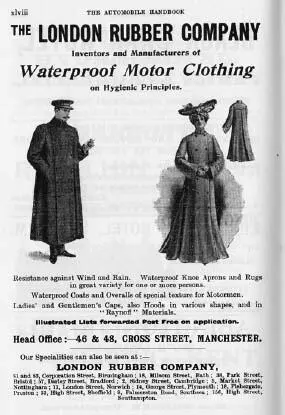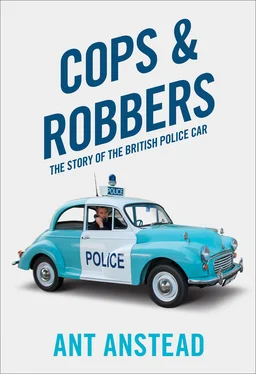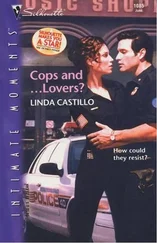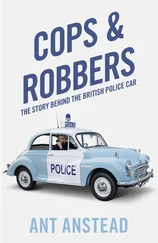1 ...6 7 8 10 11 12 ...25 However, by 1901 the Maybach/Daimler-designed Mercedes had built upon the 1891 ‘Système Panhard’ (a mechanical layout which set the front-engine transmission then rear-wheel-drive layout on most cars until the 1960s) and basically set the template for the twentieth-century car: a petrol engine, a gearbox, and brakes on a separate pedal. Everything else that appeared – from disc brakes to fuel injection and rain-sensing wipers – is a refinement of that original concept.
So the government had to act, and in 1903 came the Motor Car Act, which was the first parliamentary legislation pertaining specifically to the internal combustion engine. The original intention appears to have been to abolish speed restrictions on open roads, but ultimately that did not happen and a blanket 20mph limit was imposed instead, which lasted, officially at least, until 1 January 1931. The fact that it displaced legislation known as the Locomotives on Highways Act tells us much about the rapid rate of technological change and the British government’s typically measured approach to this. Only in the last ten years have the basic principles laid down by this been seriously challenged by technology, and as self-driving cars become a reality the legislators will have an ever-greater role in managing traffic and perhaps they will even control traffic flow through a central computer system.
In the same year, 1903, a Royal Commission on London’s traffic was set up, and after three years of investigation, having heard evidence from all interested parties, it made the following recommendations to the Home Secretary:
• Improved regulations for traffic.
• Street improvements.
• The regulation of street works.
• The regulation of costermongers.
• The removal of obstructions to traffic.
It also recommended that an advisory Traffic Board be set up for the Greater London area. In making this recommendation, the committee stated that it was of the opinion that the creation of such a board would enable traffic matters to be considered as a whole, and not in the parochial manner of existing local authorities. Apart from the phrase ‘costermongers’, whose meaning I confess I had to double-check (it’s a street trader, and I for one think we should try to bring it back into regular use! It’s so much more elegant than ‘street-trader’ or ‘pop-up shop’), that set of recommendations could have been written last week … It was a serious business, though, as London had reported around 10,000 traffic accidents a year alone in the preceding few years, and some other large cities had little better statistics.
However, as cars became more numerous on the roads, so motorists devised ways of warning each other of speed traps, which, in the early 1900s before World War I, were numerous. As early as 1901 the importers of Panhard et Levassor cars operated an official service for their customers to notify them of the location of speed traps. That’s the equivalent, in today’s terms, of Ferrari sending text messages to owners saying, ‘Go on, we’ve checked the M54 is clear today, go and max out your 458, you know you want to!’ The Automobile Association (The AA) also warned of speed traps, having advised its members to stop if a patrolman failed to salute – the driver would then be given information about ‘road conditions’ ahead, which usually meant police speed traps in which officers used a stopwatch to calculate whether or not a car was going too fast over a measured distance. Oh, how times have changed … Amazingly, the AA continued this practice until 1961.
The police remained faithful to using foot patrols and horses during much of this period, especially in poorer and rural regions, and in some areas even bicycles were discouraged; for instance, Lancashire did not supply bicycles to their officers until 1908, although since 1903 they had paid a ‘cycle allowance’ to those constables wishing to use their own bike. Some forces’ hierarchy regarded the ever-faster rise of the motor car as a bad thing for society as a whole; humans have not changed much in the last 200 years, save getting a touch bigger on average, but I think we have got better at adapting to change, haven’t we? There is proof, too, that the police were often negative towards car owners simply because they had a car, and that may have as much to do with Britain’s long-standing class war as it does with the car. This is to some extent proved by the Inland Revenue, who, until at least 1906 (and maybe beyond), levied a tax of 15 shillings a year on ‘Automobilists who employ Male Servants as a motor-car driver’ … I assume female chauffeurs were tax-free?

Even after the advent of the 1903 Motor Vehicle Act, driving was still very much seen as a recreational activity, and, as this 1904 advert makes clear, the dress required to go any distance tended to confirm this.
As cars became the norm and horses the exception, this changed. However, that unenforceable 1903 law had pitched the police into conflict with the motorist, and the pages of The Autocar , The Motor and other publications throughout the early twentieth century are filled with tales of pioneer motorists battling what they considered to be overzealous police. As speed cameras and average speed zones proliferate today, you could argue that that’s never changed, but the British police like to police by consent and the media has now educated large sections of the public to the dangers of speeding, so it’s no longer socially acceptable to boast of speeds attained on the road in the way that it was up until the 1980s.
The first occasion on which a motor car was used by the police to apprehend a criminal was, as far as we know, on 15 August 1900, the very beginning of the twentieth century, at Moor Edge, Newcastle upon Tyne. A rider of a horse, who was drunk and causing havoc, was chased for a mile and arrested by a constable who had commandeered a Gladiator Voiturette from its owner, one F.R. Goodwin, who, perhaps unsurprisingly in this era when cars were few and far between, later achieved some fame as a racing driver. There are many subsequent incidents of private cars being commandeered by the police, so that fantasy of Clint Eastwood getting in your car and shouting ‘follow that car’ (or horse) may well have been more likely in 1904! Oh, and for the record I have, of course, commandeered a number of cars belonging to members of the public, and yes, of course I said the very same words. The Moor Edge incident demonstrates initiative and a grasp of then-current technology on the part of the arresting constable; both elements that were in shorter supply among the higher echelons of the police at this point. Much was made of this in the press and it certainly helped further the cause of the motor car over the horse in the general population’s mind, so it was a significant moment for the motoring ‘movement’ as a whole.
Ironically, the Clement Gladiator 3.5hp Voiturette could not have been a more unlikely motorised hero, and it was far from the fire-breathing performance machine that its name suggested. It featured a 402cc single-cylinder engine and had a top speed of about 20mph, which it could obviously sustain far longer than a drunk man on a horse …
Bicycle magnate Adolphe Clément first made a fortune producing pneumatic tyres, then later whole bikes, cars, motorcycles, airships and even aeroplanes! He saw the potential of the motor industry early on and invested in or promoted several marques. His Clement Gladiator was basically a Benz copy made by one of these firms, Cycles et Automobiles Gladiator of Le Pre Saint-Gervais, France, which was imported then by Goliath Co. of Long Acre, London. It’s thought they probably made a small number in the UK as well, although sources disagree on that.
Читать дальше









